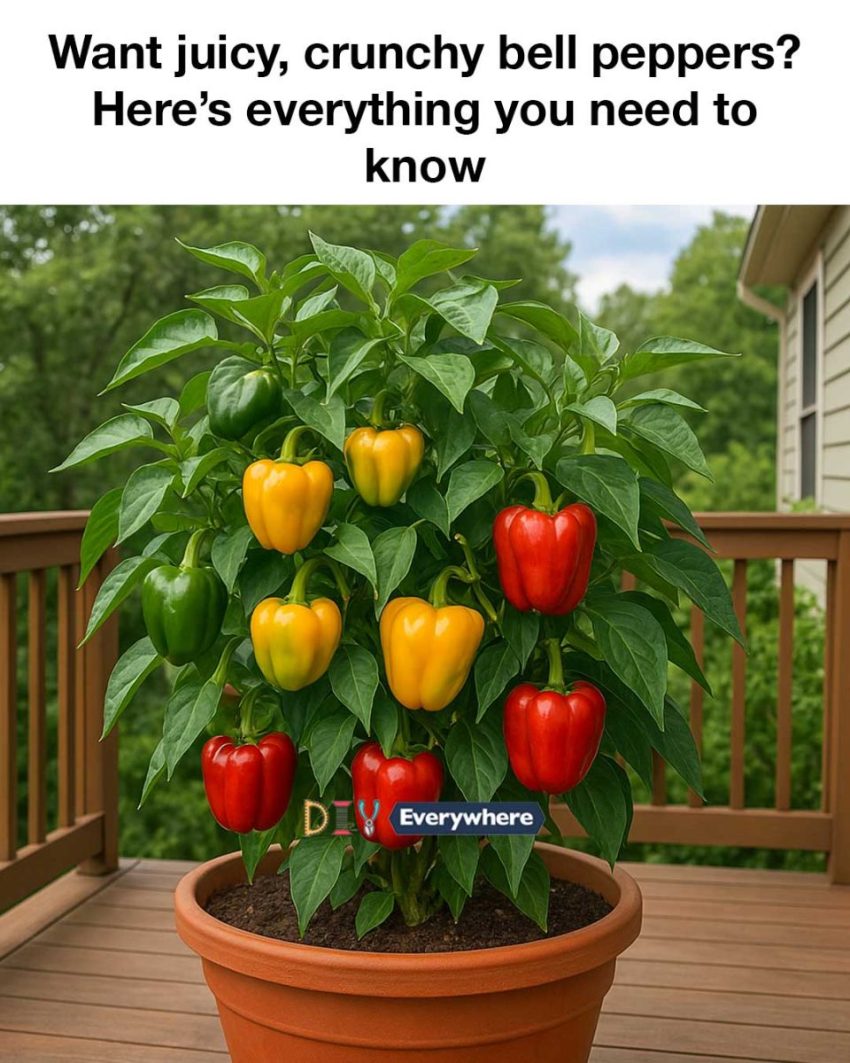ADVERTISEMENT
Choosing the Right Variety of Bell Peppers
There are numerous varieties of bell peppers, each with its unique flavor and color. Popular choices include ‘California Wonder,’ known for its classic green and red fruits, and ‘Purple Beauty,’ which offers a striking purple hue. If you prefer sweeter peppers, consider ‘Red Beauty’ or ‘Yellow Belle.’ When selecting a variety, consider your climate and space, as some varieties are more suited to certain conditions and sizes.
Selecting the Perfect Pot for Bell Peppers
When growing bell peppers in pots, choose a container that is at least 12 inches deep and wide. This size allows ample room for root development. Ensure the pot has adequate drainage holes to prevent waterlogging, which can lead to root rot. Materials like terracotta or plastic are suitable, but keep in mind that terracotta can dry out faster, requiring more frequent watering.
Preparing the Soil for Optimal Growth
Bell peppers require well-draining, nutrient-rich soil. A mix of potting soil with added compost or well-rotted manure will provide the necessary nutrients. The soil pH should be slightly acidic to neutral, around 6.0 to 6.8. Before planting, loosen the soil to improve aeration and root penetration, ensuring your peppers have the best start possible.
Step-by-Step Guide to Planting Bell Peppers in Pots
Start by filling your pot with prepared soil, leaving about an inch from the top. Plant seeds or seedlings about 18-24 inches apart if using a large container. If planting seeds, sow them 1/4 inch deep and cover lightly with soil. Water gently to moisten the soil without washing away the seeds. If using seedlings, plant them at the same depth they were growing in their nursery pots. Water thoroughly after planting.
Watering and Fertilizing Your Bell Peppers
Bell peppers require consistent moisture but do not like to sit in water. Water when the top inch of soil feels dry, usually about once a week, increasing frequency during hot spells. Use a balanced fertilizer every 4-6 weeks, or a liquid fertilizer every two weeks, to provide essential nutrients. Avoid over-fertilizing, as this can lead to excessive foliage growth at the expense of fruit production.
Managing Pests and Diseases
Common pests include aphids, spider mites, and whiteflies. Regularly inspect your plants and use insecticidal soap or neem oil as needed. Diseases such as blossom end rot and bacterial spot can occur, often due to inconsistent watering or poor air circulation. Ensure proper spacing and watering practices to minimize these risks. Removing affected leaves and using disease-resistant varieties can also help.
Ensuring Proper Sunlight and Temperature
Place your pots in a location that receives full sun for most of the day. If temperatures exceed 90°F, consider providing some afternoon shade to prevent heat stress. Conversely, if temperatures drop below 55°F, consider bringing pots indoors or using row covers to protect the plants. Monitoring the weather and adjusting accordingly will help maintain optimal growing conditions.
Harvesting Your Juicy, Crunchy Bell Peppers
Bell peppers can be harvested when they reach their full size and desired color. For green peppers, this is usually about 70-80 days after planting. If you prefer red, yellow, or orange peppers, allow them to ripen on the plant for an additional few weeks. Use a sharp knife or scissors to cut the peppers from the plant, leaving a short stem attached to prolong freshness.
Troubleshooting Common Bell Pepper Growing Issues
If your bell peppers are not setting fruit, it may be due to high temperatures or poor pollination. Hand-pollination can help in such cases. Yellowing leaves often indicate nutrient deficiencies or overwatering. Adjust your fertilization and watering schedule accordingly. If your peppers are small or misshapen, it could be due to inconsistent watering or nutrient imbalances.
Conclusion: Enjoying Your Homegrown Bell Peppers
With the right care and attention, growing bell peppers at home can be a fulfilling experience. Not only do you get to enjoy fresh, juicy, and crunchy peppers, but you also gain the satisfaction of cultivating your own food. Whether used in salads, stir-fries, or stuffed dishes, homegrown bell peppers are a delicious addition to any meal. Enjoy the fruits of your labor and share your bounty with friends and family.


